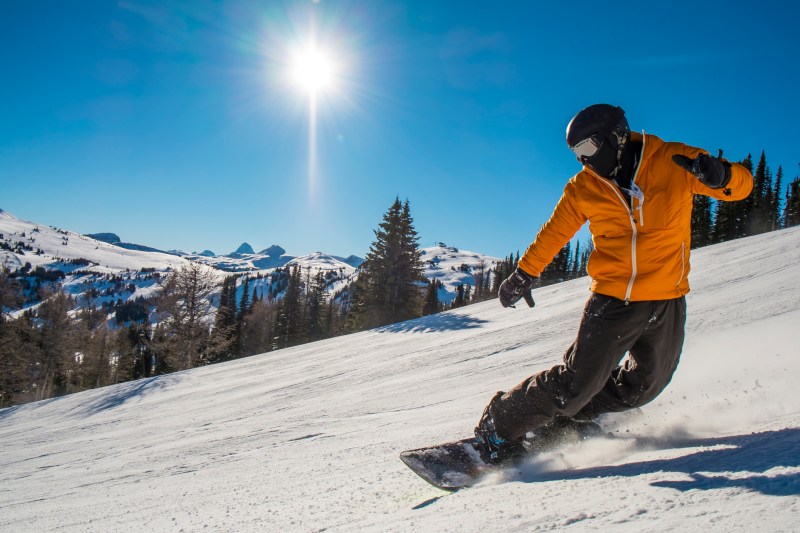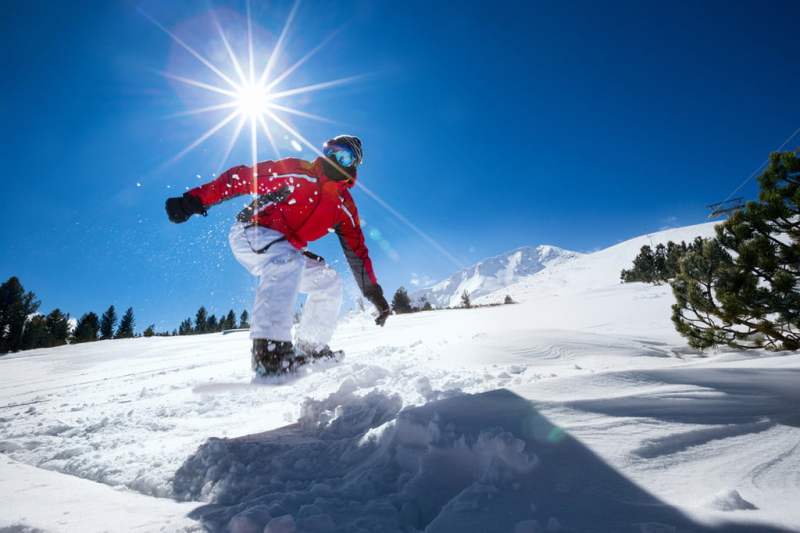One of the first things you’ll learn when snowboarding is your preferred snowboard stance — either right or left foot forward. While left-foot-forward snowboarders get the reassurance of being called “regular,” anyone who prefers to ride right foot forward is referred to as being goofy.
Goofy foot snowboard riding has roots deep in skate and also surfer culture, and your preference is often linked to your dominant foot and hand. How does this work, and where does the term “goofy foot” even come from? There are a few possibilities and attributions, and in a culture of terminology that includes phrases like “dude,” “steez,” and “gnarly,” it can be hard to pin down exact origins. These words have just become part of our culture, dude.

First, let’s talk about snowboard stance
Before we get into the origin of “goofy foot,” let’s look at snowboard stances. First, and perhaps most importantly, your stance does not really matter. Okay, it’s a bit important for your snowboard learning progression, but that’s about it. There was a period of time, albeit more in skateboarding than in snowboarding, where new riders were trying to ride goofy to go against the grain, even if it was unnatural to them, and why not? In a sport built on rebellion, internal rebellion was always going to happen.
However, all that does is make things more challenging. When you’re snowboarding, you tend to want your dominant foot at the rear of the board. True, your front foot can be used for turn initiation and is far more than the counterweight many treat it as, but your back foot is the key to nailing those turns. You may already know which is your dominant foot, but if not, here’s a hint — it’s usually related to your dominant hand. If you write with your left hand, you’re more likely to be left-foot dominant and ride goofy-footed on a snowboard.
As around 10% of the world’s population is left-handed, it follows that goofy foot snowboarders would account for 10% of all snowboarders. However, studies have shown that it’s more like 30%, so this rule is perhaps not as scientific as it first appears. The most common way to test your preference is to have a friend stand behind you and give you a gentle push in the back when you’re not expecting it. Whichever foot you put out to break your fall is usually your forward foot for snowboarding.
Ways to test your snowboard ‘footedness’
We mentioned the push test above, but there are a couple of other ways to find out if you should ride goofy foot or regular on your board.
The Stair Test:
- Approach a staircase.
- Observe which foot you naturally lead with when ascending the stairs.
The Slide Test:
- Find a slippery surface like a polished wooden floor.
- Put on smooth socks.
- Take a running start and slide forward.
- Notice the foot you naturally put forward to control your slide.
If you consistently lead with your left foot in these tests, you are likely a regular snowboarder. If you consistently lead with your right foot, you’re probably a goofy foot snowboarder. However, these tests are not foolproof, and you may feel more comfortable with a different stance. Ultimately, the best way to determine your natural stance is to try both stances on your snowboard and see which one feels more natural and balanced to you.
Where does the term goofy foot come from?
But where does it come from? Well, you might have already guessed it. The word “goofy” sounds familiar, right? Well, that loveable Disney character might just be the reason behind the term. A Disney film from the 1930s called Hawaiian Holiday shows Goofy surfing with his right foot forward — more than a little unusual at the time. There are two issues with this, though. Firstly, he’s shown riding regular, too, and secondly, the movie also shows all the other characters doing the same. Riding left foot forward could just as easily be called Mickey riding.
The rise of the term “goofy foot” occurred in the ’60s surf scene. Most likely, this was used just as often as words like “kooks” and “odd,” but the “goofy” term stuck. It just means different, because so few riders rode right foot forward at the time. While this is more likely, we’re sticking with the Disney theory.




